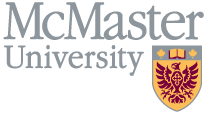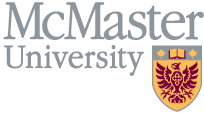⏱ 5 min read, 65 min video
As we age, many of us begin to think more seriously about how to maintain our health, independence, and quality of life. In a recent webinar, Dr. Stuart Phillips, Professor of Kinesiology at McMaster University and Canada Research Chair in Skeletal Muscle Health, shared compelling insights into how muscle, strength, and protein play a vital role in aging well.
Highlights include:
- 00:00:00 Introduction
- 00:01:45 Why do all living things age?
- 00:04:33 What can we do to slow aging?
- 00:06:30 What is sarcopenia?
- 00:10:01 The importance of dietary protein and how much you really need
- 00:22:36 The ‘perfect’ active aging formula
- 00:37:47 Myths and facts about protein
- 00:41:45 Putting it all together
- 00:43:18 Plant versus animal-based protein
- 00:45:11 Protein supplements
- 00:46:12 Timing of your highest protein meal
- 00:48:02 How can a sedentary person get started with strength training?
- 00:49:51 How do the different types of resistance training compare?
- 00:49:51 High-Intensity Interval Training (HIIT) and heart rate zones
- 00:54:42 Collagen for muscle and joint health?
- 00:59:22 Protein and strength training for bone health
- 01:01:54 The role of creatine in muscle and brain health
Why do we age—and can we slow it down?
Aging is a natural biological process, but it’s not entirely out of our control. While we can’t reverse aging, we can slow it down by making smart lifestyle choices. Research on identical twins shows that lifestyle can influence lifespan by up to 15 years—even when genetics are the same.
The real goal, Dr. Phillips emphasized, isn’t just living longer—it’s living better. Chronic diseases like heart disease, diabetes, and Alzheimer’s often reduce our quality of life. The key is to compress the time we spend in poor health and extend our “health span”—the years we live in good health.
Muscle matters more than you think
One of the most overlooked tissues in aging is skeletal muscle. Age-related muscle loss, known as sarcopenia, begins earlier than many realize—often as early as age 35. This decline affects strength, mobility, and the ability to perform everyday tasks. Grip strength, a simple measure of muscle function, is a surprisingly strong predictor of overall health and longevity. When muscle mass drops below a certain threshold, even basic activities like climbing stairs or rising from a chair become difficult.
Protein: The building block of muscle health
Protein is essential for maintaining muscle, especially as we age. Dr. Phillips explained how protein intake affects muscle protein synthesis—the process of building muscle. Eating protein-rich meals throughout the day, especially at breakfast, helps counteract anabolic resistance, a condition where aging muscles respond less effectively to protein.
Unfortunately, many older adults don’t consume enough. The current recommended dietary allowance (RDA) is 0.8 grams of protein per kilogram of body weight per day—but research suggests older adults need closer to 1.2 grams per kilogram to maintain muscle and strength. For example, a 135 lb (61 kg) woman would need 73.5 grams per day and a 180 lb (82 kg) man would need 98.5 grams of protein per day.
What does that look like? Here is a sample meal plan based on a protein-rich Mediterranean style diet.
| Female (135 lbs, 61 kg) | Male (180 lbs, 82 kg) |
| Breakfast (~21 g protein) | Breakfast (~32 g protein) |
| 1 large egg (6 g) | 2 large eggs (12 g) |
| 1/2 cup Greek yogurt (10 g) | 3/4 cup Greek yogurt (15 g) |
| 1/2 cup berries | 1/2 cup berries |
| 1 slice whole grain toast (3 g) | 1 slice whole grain toast (3 g) |
| 1 tbsp chia seeds (2 g) | 1 tbsp chia seeds (2 g) |
| Lunch (~15 g protein) | Lunch (~21.5 g protein) |
| 1/2 cup cooked lentils (9 g) | 3/4 cup cooked lentils (13 g) |
| 1/2 cup cooked quinoa (4 g) | 1/2 cup cooked quinoa (4 g) |
| 2 tsp pumpkin seeds (2 g) | 1.5 tbsp pumpkin seeds (4.5 g) |
| Dinner (~22.5 g protein) | Dinner (~30 g protein) |
| 3 oz. salmon (19 g) | 4 oz. salmon (25 g) |
| 1/3 cup brown rice (2 g) | 1/2 cup brown rice (3 g) |
| 2 tsp hummus (1.5 g) | 1 tbsp hummus (2 g) |
| Snack (~15 g protein) | Snack (~15 g protein) |
| 1 oz almonds (6 g) | 1 oz almonds (6 g) |
| 1/3 cup cottage cheese (9 g) | 1/3 cup cottage cheese (9 g) |
| Total Protein = ~73.5 g | Total Protein = ~98.5 g |
Plant vs. animal protein: What's best?
While animal proteins have traditionally been considered superior for muscle health, newer research shows that plant proteins—like soy, quinoa, and legumes—can be just as effective, especially when consumed in sufficient quantities. Plant proteins also come with added benefits like dietary fibre and are associated with better mental health and physical function.
Exercise: The miracle prescription
If physical activity were a pill, it would be the most prescribed drug in the world. It lowers the risk of heart disease, cancer, diabetes, and even dementia. The most dramatic benefits come when someone goes from doing nothing to doing something—even 10 minutes a day of moderate activity can reduce mortality risk by 20%.
But aerobic activity alone isn’t enough. Strength training—using weights, resistance bands, or even body weight—offers unique benefits. It improves muscle mass, bone density, and balance, and reduces the risk of falls and osteoarthritis.
The good news? Any form of resistance training works. Whether it’s lifting weights, using resistance bands, or doing chair exercises, the key is to start. Two sessions per week is a great target, and more can offer additional benefits.
The Canadian 24-Hour Movement Guidelines are a great place to start to integrate a healthy approach to physical activity, sleep, and sedentary behaviour. For adults aged 65+, the recommendations are:
- 150 minutes of moderate to vigourous activity per week,
- muscle strengthening twice per week,
- physical activities that challenge balance,
- 7-8 hours of good-quality sleep on a regular basis, with consistent bed and wake-up times, and
- limiting sedentary behaviour to 8 hours or less per day, with no more than 3 hours of recreational screen time and breaking up periods of sitting as often as possible.
Putting it all together
Dr. Phillips concluded with a holistic view of aging well. It’s not just about diet and exercise, it’s also about:
- Moving daily through physical activity and structured exercise
- Eating to support muscle and metabolic health
- Prioritizing sleep
- Maintaining social connections and mental engagement
These pillars form the foundation of a longer, healthier, and more fulfilling life.
Please give us your feedback on this content with a 4-minute survey.
.tmb-blogpost.png?Culture=en&sfvrsn=1e1a1fd6_5)


_jpg.jpg?sfvrsn=bcb0dd6_2)


